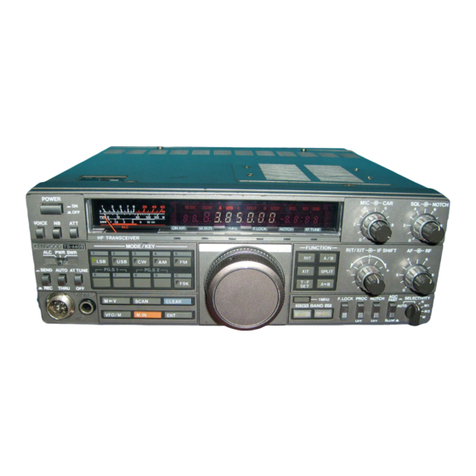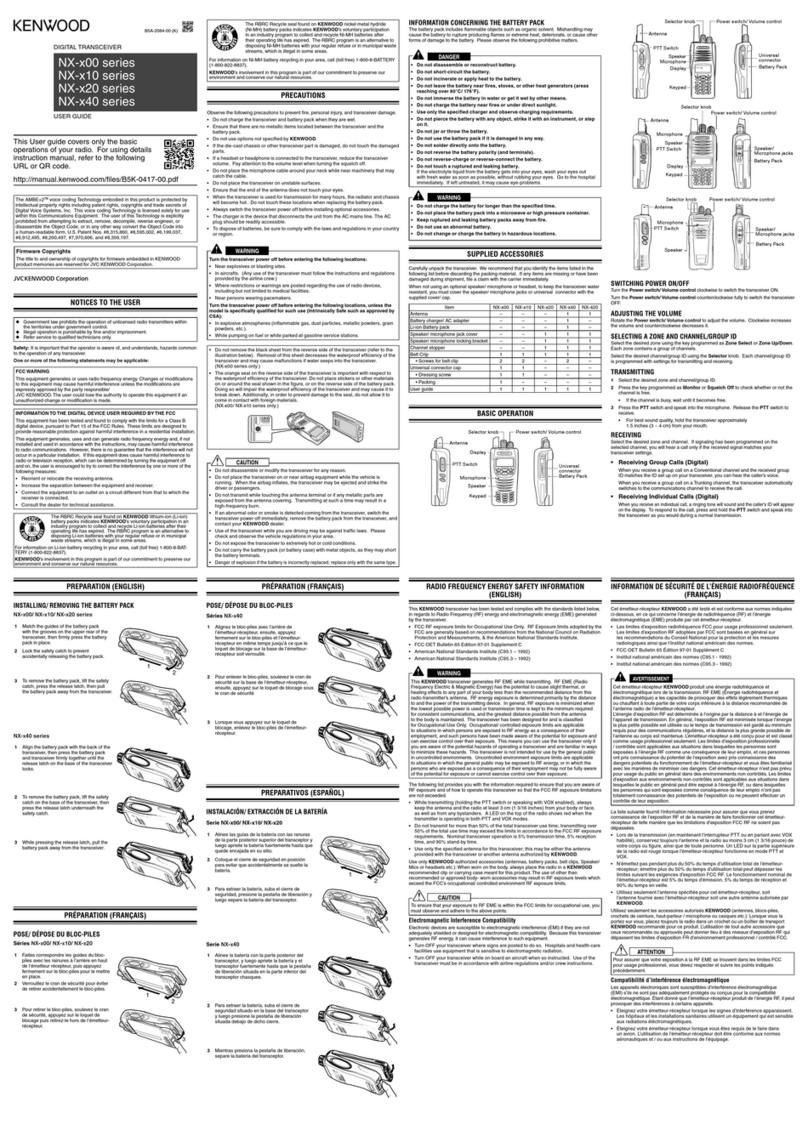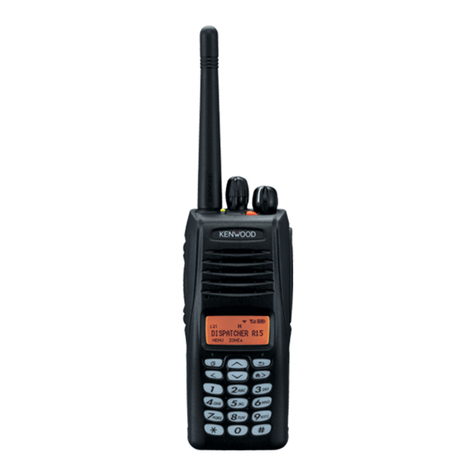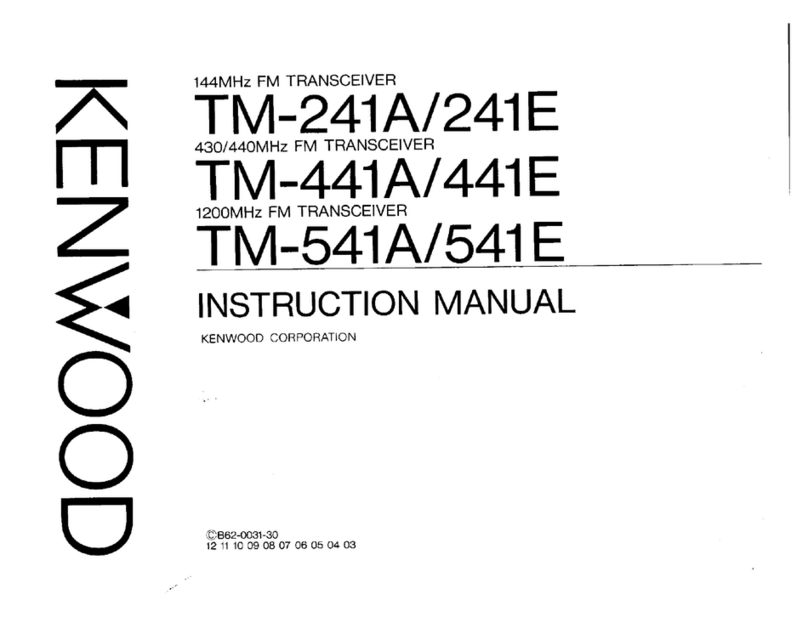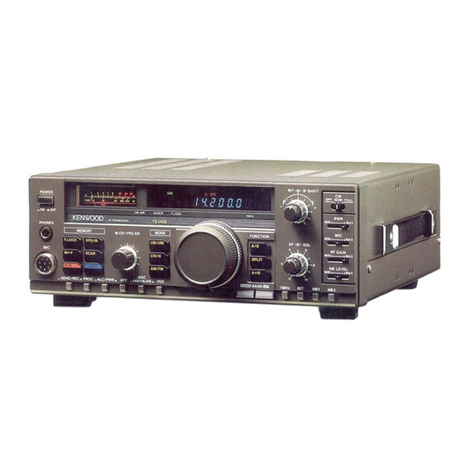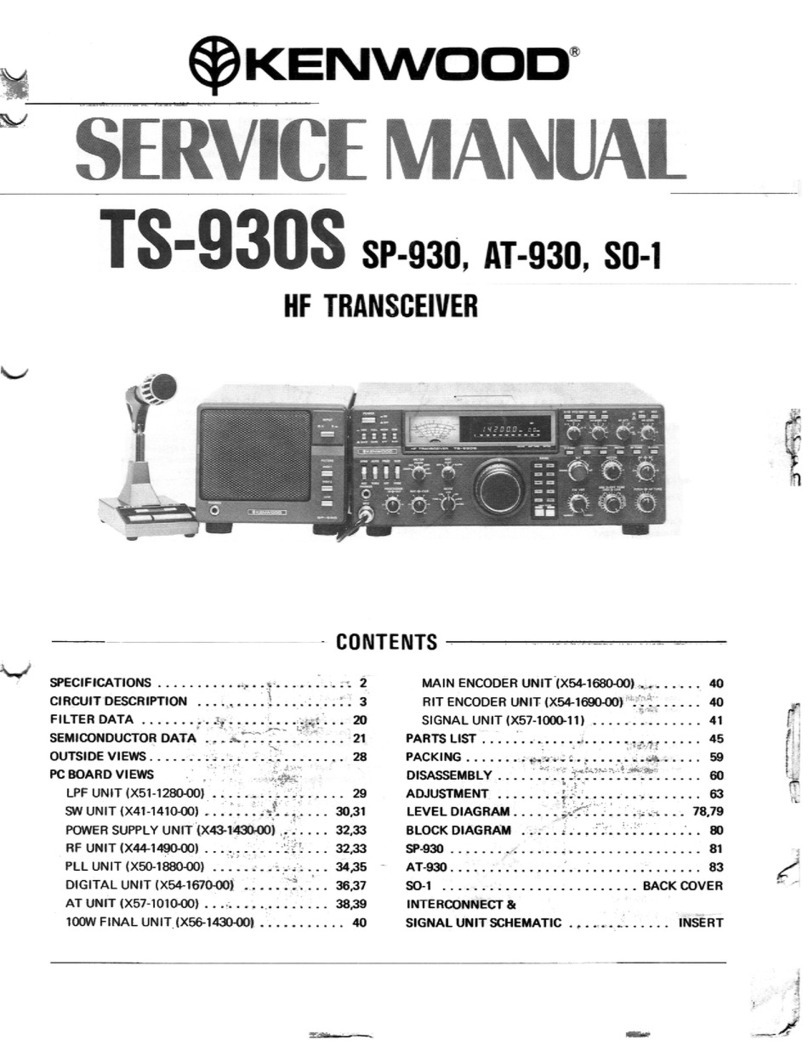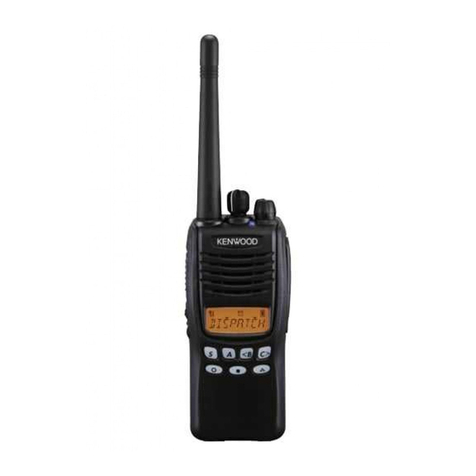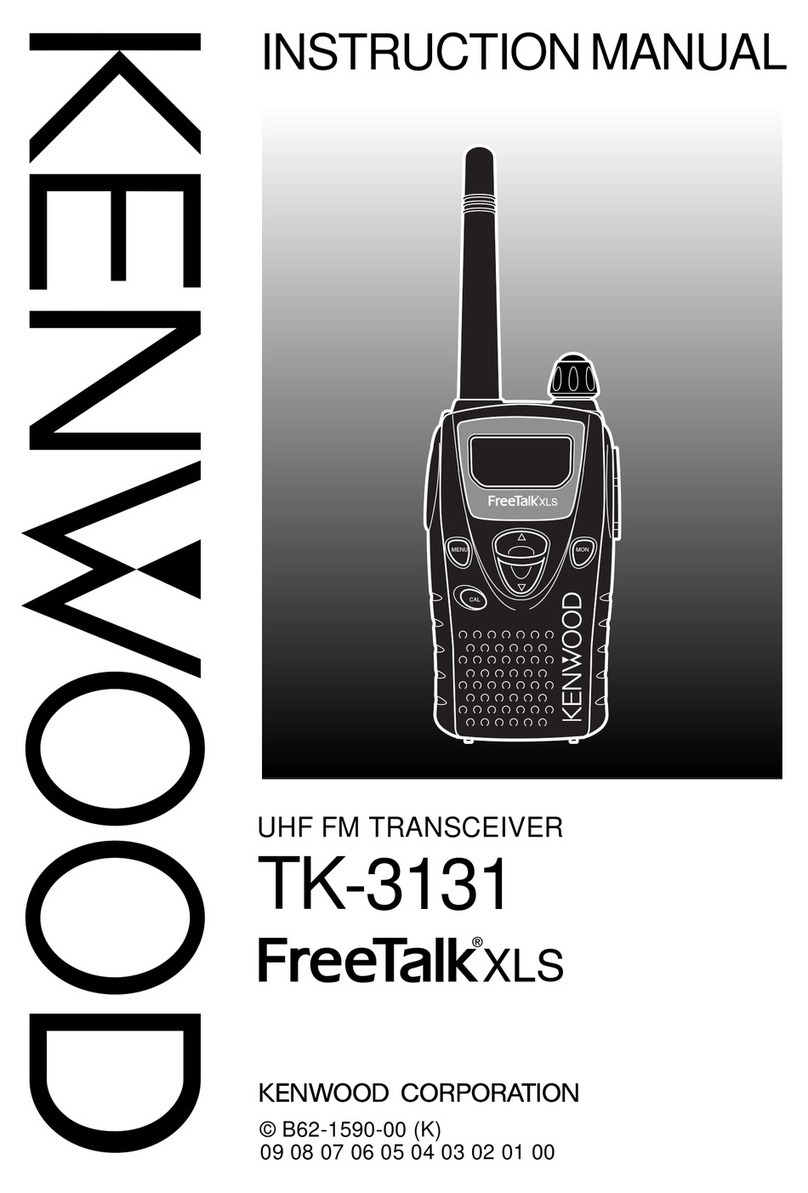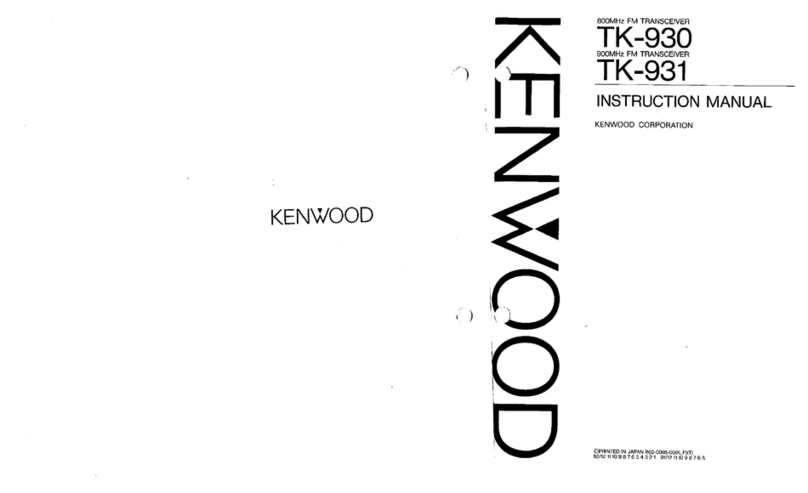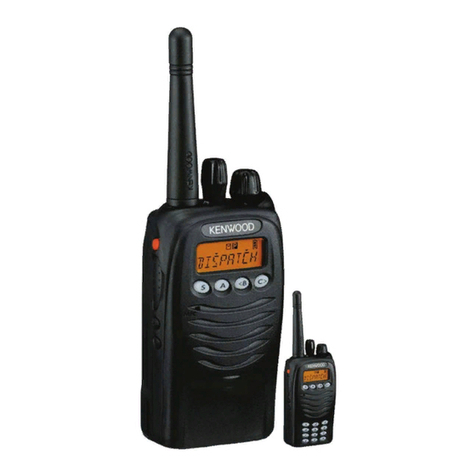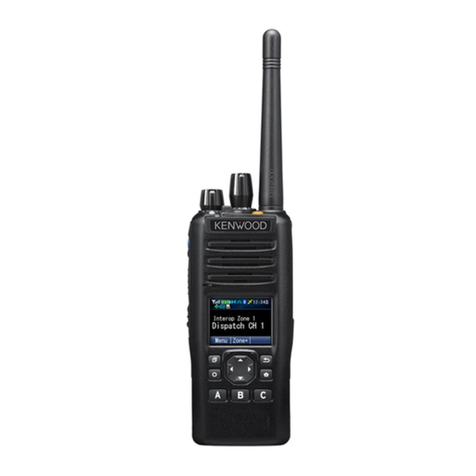
– 1 –
PC CONTROL COMMAND REFERENCE GUIDE
ABOUT THIS REFERENCE GUIDE
All descriptions in this reference guide are for the
user’s convenience. JVC KENWOOD Corporation
does not support nor warrant the applicability of this
documentation in any way.
CONNECTING TO A PC
You can connect the TS-890S transceiver to a PC
COM port using a RS-232C connector, to a USB port
using a USB 2.0 (AB type) cable, or to a LAN port
If using the COM port or USB, through the transceiver
menu, select a baud rate for communications between
the PC and the transceiver.
■Using a RS-232C Straight Cable
Directly connect the RS-232C straight cable
between the COM port of the PC and the COM
terminal of the transceiver.
■Using a USB Cable
When using a USB cable, you must first pre-install
a virtual COM port driver on the PC. Then, connect
the USB cable A connector to the USB port of the
PC and the B connector the USB terminal of the
transceiver.
Download the driver from the following URL.
http://www.kenwood.com/i/products/info/amateur/software_download.html
Note: No warranty for the operation is granted when
connecting through a USB hub.
■Using a LAN Cable
When connecting the TS-890S and a PC using
a hub, connect them with a straight cable. When
connecting the TS-890S directly to a PC, connect
them with a cross cable.
LAN COMMUNICATION PROCEDURES
1Through the LAN menu of the transceiver, set
the IP addresses and your administrator ID and
password.
2Set the TCP/IP using the PC.
3Send the ##CN command from the PC to connect
with the transceiver.
4When a connection response comes from the
transceiver, send the ##ID command to transmit
your administrator ID and password.
5If the transmitted ID and password are
authenticated with those set up in the transceiver,
the connection is completed.
Note: If there are no communications for 10 seconds, the TCP/IP
connection with the transceiver is terminated.
COM/ USB-B (VIRTUAL COM) CONNECTOR
Entry Specifications
Protocol UART (RS-232C)
Baud Rate Selectable from 4800*/ 9600/ 19200/ 38400/
57600/ 115200 bps
Start Bit 1
Data Bit 8
Stop Bit 1 (2 is available only when using 4800 bps)
Parity Bit None
Flow Control Hardware flow control is possible
*:4800 bps cannot be used with the USB-B connector.
LAN CONNECTOR
Entry Specifications
Protocol TCP/IP
Character Encoding Mode UTF-8
CHARACTER CODING
Character coding is based on the ASCII code.
However, the letters assigned to 80h ~ FFh are
replaced as follows by Menu 9-01 (Keyboard
Language):
Menu 9-01 Setting Character Coding
Japanese ISO-2022-JP
Other than Japanese ISO-8859-1
AI (AUTO INFORMATION) FUNCTION
The AI (Auto Information) function automatically outputs
contents of commands whenever various states of the
transceiver changes.
For example, the frequency information of the VFO A
is automatically output to the PC with the FA command
when you change the operating frequency of the VFO
A. It is not necessary to first send a read command from
the PC. Besides the frequency of the VFO A, almost all
changes of state of the transceiver are automatically
output with each command.
Using this function, you can see the state of the
transceiver on a PC in real time. This is useful when
making an application using log management software.
Turn this function on using the AI command (the initial
state is OFF).


